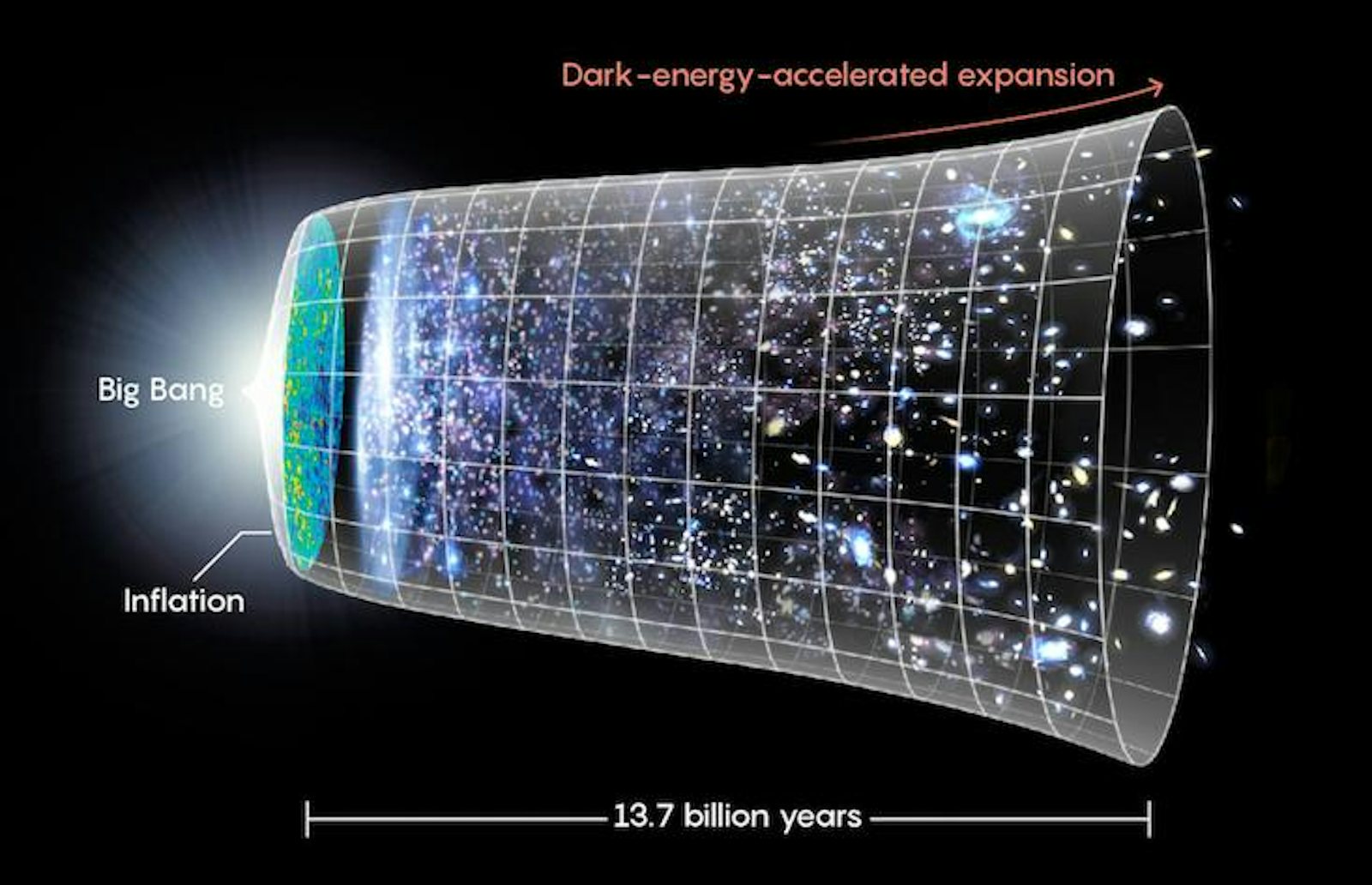Reprinted with permission from Quanta Magazine‘s Abstractions blog.

The controversial idea that our universe is just a random bubble in an endless, frothing multiverse arises logically from nature’s most innocuous-seeming feature: empty space. Specifically, the seed of the multiverse hypothesis is the inexplicably tiny amount of energy infused in empty space—energy known as the vacuum energy, dark energy, or the cosmological constant. Each cubic meter of empty space contains only enough of this energy to light a lightbulb for 11-trillionths of a second. “The bone in our throat,” as the Nobel laureate Steven Weinberg once put it, is that the vacuum ought to be at least a trillion trillion trillion trillion trillion times more energetic, because of all the matter and force fields coursing through it. Somehow the effects of all these fields on the vacuum almost equalize, producing placid stillness. Why is empty space so empty?
While we don’t know the answer to this question—the infamous “cosmological constant problem”—the extreme vacuity of our vacuum appears necessary for our existence. In a universe imbued with even slightly more of this gravitationally repulsive energy, space would expand too quickly for structures like galaxies, planets, or people to form. This fine-tuned situation suggests that there might be a huge number of universes, all with different doses of vacuum energy, and that we happen to inhabit an extraordinarily low-energy universe because we couldn’t possibly find ourselves anywhere else.
Some scientists bristle at the tautology of “anthropic reasoning” and dislike the multiverse for being untestable. Even those open to the multiverse idea would love to have alternative solutions to the cosmological constant problem to explore. But so far it has proved nearly impossible to solve without a multiverse. “The problem of dark energy [is] so thorny, so difficult, that people have not got one or two solutions,” said Raman Sundrum, a theoretical physicist at the University of Maryland.
To understand why, consider what the vacuum energy actually is. Albert Einstein’s general theory of relativity says that matter and energy tell space-time how to curve, and space-time curvature tells matter and energy how to move. An automatic feature of the equations is that space-time can possess its own energy—the constant amount that remains when nothing else is there, which Einstein dubbed the cosmological constant. For decades, cosmologists assumed its value was exactly zero, given the universe’s reasonably steady rate of expansion, and they wondered why. But then, in 1998, astronomers discovered that the expansion of the cosmos is in fact gradually accelerating, implying the presence of a repulsive energy permeating space. Dubbed dark energy by the astronomers, it’s almost certainly equivalent to Einstein’s cosmological constant. Its presence causes the cosmos to expand ever more quickly, since, as it expands, new space forms, and the total amount of repulsive energy in the cosmos increases.

However, the inferred density of this vacuum energy contradicts what quantum field theory, the language of particle physics, has to say about empty space. A quantum field is empty when there are no particle excitations rippling through it. But because of the uncertainty principle in quantum physics, the state of a quantum field is never certain, so its energy can never be exactly zero. Think of a quantum field as consisting of little springs at each point in space. The springs are always wiggling, because they’re only ever within some uncertain range of their most relaxed length. They’re always a bit too compressed or stretched, and therefore always in motion, possessing energy. This is called the zero-point energy of the field. Force fields have positive zero-point energies while matter fields have negative ones, and these energies add to and subtract from the total energy of the vacuum.
The total vacuum energy should roughly equal the largest of these contributing factors. (Say you receive a gift of $10,000; even after spending $100, or finding $3 in the couch, you’ll still have about $10,000.) Yet the observed rate of cosmic expansion indicates that its value is between 60 and 120 orders of magnitude smaller than some of the zero-point energy contributions to it, as if all the different positive and negative terms have somehow canceled out. Coming up with a physical mechanism for this equalization is extremely difficult for two main reasons.
First, the vacuum energy’s only effect is gravitational, and so dialing it down would seem to require a gravitational mechanism. But in the universe’s first few moments, when such a mechanism might have operated, the universe was so physically small that its total vacuum energy was negligible compared to the amount of matter and radiation. The gravitational effect of the vacuum energy would have been completely dwarfed by the gravity of everything else. “This is one of the greatest difficulties in solving the cosmological constant problem,” the physicist Raphael Bousso wrote in 2007. A gravitational feedback mechanism precisely adjusting the vacuum energy amid the conditions of the early universe, he said, “can be roughly compared to an airplane following a prescribed flight path to atomic precision, in a storm.”
Compounding the difficulty, quantum field theory calculations indicate that the vacuum energy would have shifted in value in response to phase changes in the cooling universe shortly after the Big Bang. This raises the question of whether the hypothetical mechanism that equalized the vacuum energy kicked in before or after these shifts took place. And how could the mechanism know how big their effects would be, to compensate for them?
So far, these obstacles have thwarted attempts to explain the tiny weight of empty space without resorting to a multiverse lottery. But recently, some researchers have been exploring one possible avenue: If the universe did not bang into existence, but bounced instead, following an earlier contraction phase, then the contracting universe in the distant past would have been huge and dominated by vacuum energy. Perhaps some gravitational mechanism could have acted on the plentiful vacuum energy then, diluting it in a natural way over time. This idea motivated the physicists Peter Graham, David Kaplan, and Surjeet Rajendran to discover a new cosmic bounce model, though they’ve yet to show how the vacuum dilution in the contracting universe might have worked.
In an email, Bousso called their approach “a very worthy attempt” and “an informed and honest struggle with a significant problem.” But he added that huge gaps in the model remain, and “the technical obstacles to filling in these gaps and making it work are significant. The construction is already a Rube Goldberg machine, and it will at best get even more convoluted by the time these gaps are filled.” He and other multiverse adherents see their answer as simpler by comparison.
Natalie Wolchover is a senior writer at Quanta Magazine covering the physical sciences. Previously, she wrote for Popular Science, LiveScience and other publications. She has a bachelor’s in physics from Tufts University, studied graduate-level physics at the University of California, Berkeley, and co-authored several academic papers in nonlinear optics. Her writing was featured in The Best Writing on Mathematics 2015. She is the winner of the 2016 Excellence in Statistical Reporting Award and the 2016 Evert Clark/Seth Payne Award for young science journalists. @NattyOver






























